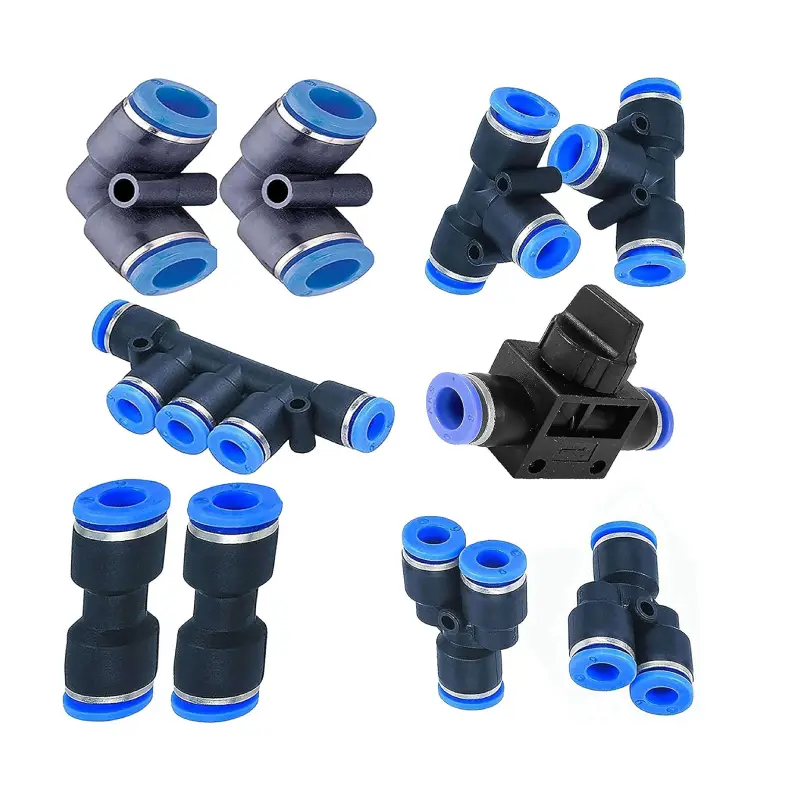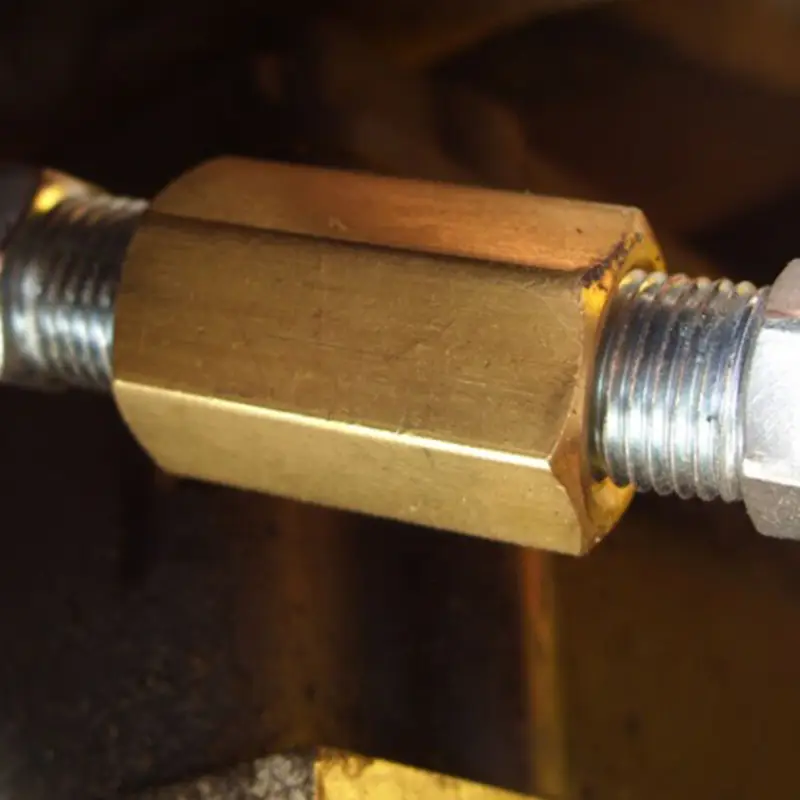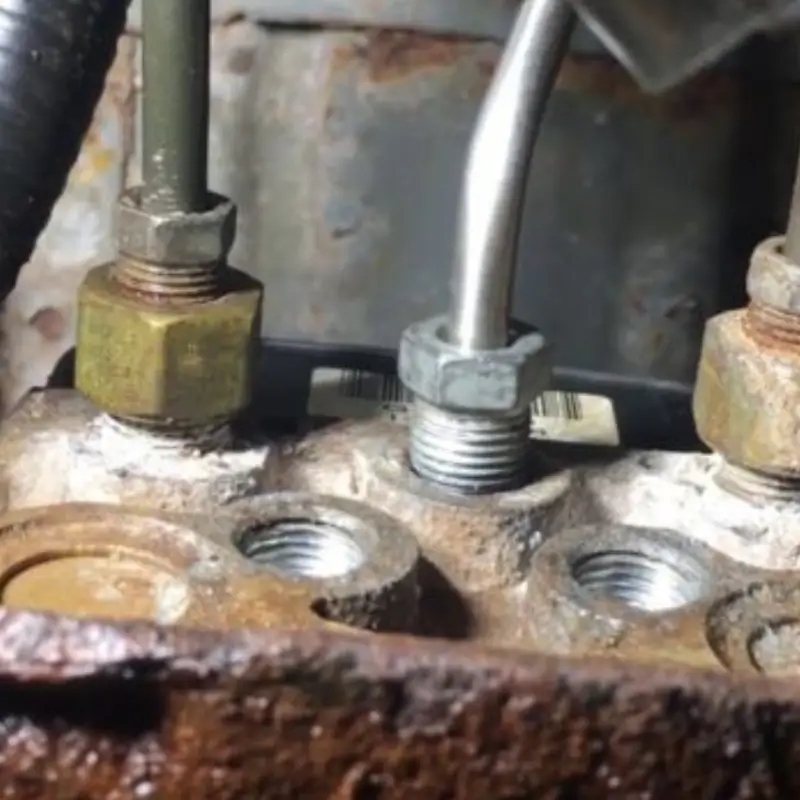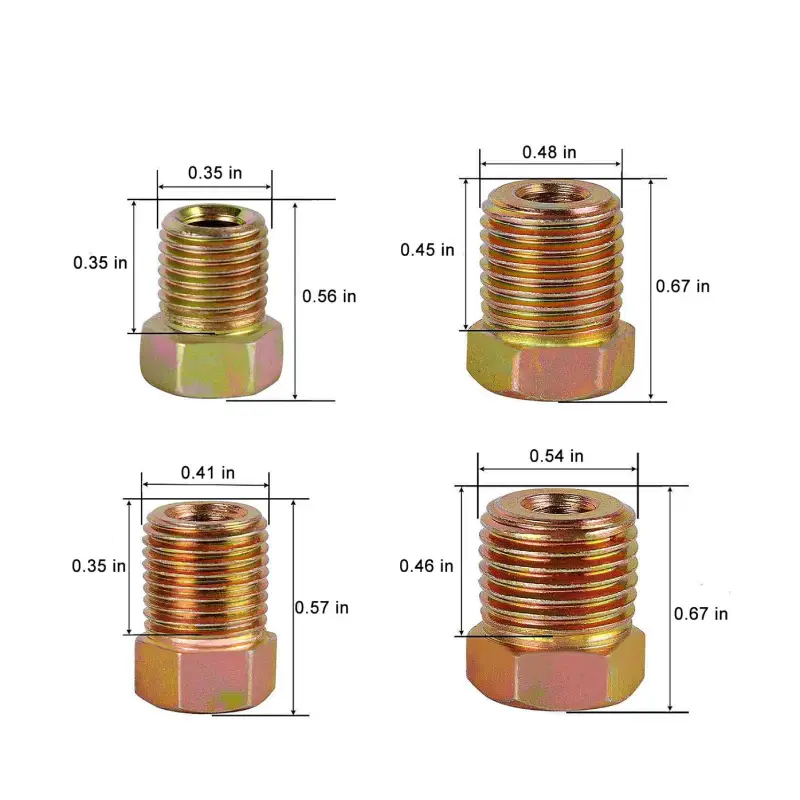Pneumatic fittings are indispensable components in various industrial and commercial applications, facilitating the efficient transfer of compressed air or gases. Their primary role is to create secure, leak-free connections between different parts of a pneumatic system, ensuring optimal performance. This blog post explores the diverse benefits and applications of pneumatic fittings, highlighting their crucial role in modern operations.
We’ll delve into the advantages of using these fittings, such as their ease of installation, versatility, and reliability in various environments. Furthermore, we’ll examine their widespread applications across industries, from manufacturing and automotive to medical and aerospace, demonstrating their adaptability and importance in numerous processes.
What Are Pneumatic Fittings
Pneumatic fittings are essential components used to connect various parts of a compressed air or gas system. They provide secure, leak-free connections between hoses, tubes, pipes, valves, and other pneumatic devices. Their primary function is to ensure the efficient and reliable transfer of air or gas, maintaining system integrity and performance.
These fittings come in a wide range of types, sizes, and materials to accommodate diverse application requirements. Common materials include brass, stainless steel, and various plastics, each offering specific advantages in terms of durability, corrosion resistance, and pressure handling. The variety of connection styles, such as threaded, push-to-connect, and barbed, allows for flexibility in system design and installation.
What Are Pneumatic Fittings Made of?
Pneumatic fittings are manufactured from a variety of materials, each chosen for its specific properties and suitability for different applications. The selection of material is crucial for ensuring the fitting can withstand the operating conditions, including pressure, temperature, and the type of gas or air being used.
Here are some common materials used in pneumatic fittings:
Brass Pneumatic Fittings:
- Known for its durability and corrosion resistance.
- Commonly used in general-purpose applications.
- Offers good thermal conductivity.
Stainless Steel Pneumatic Fittings:
- Provides excellent corrosion resistance, especially in harsh environments.
- Suitable for high-pressure and high-temperature applications.
- Often used in food processing and chemical industries.
Plastics Pneumatic Fittings (e.g., Nylon, Polypropylene):
- Lightweight and cost-effective.
- Offer good chemical resistance.
- Suitable for low-pressure applications.
- Often used in applications where vibration is a factor.
Types of Pneumatic Fittings

Threaded Pneumatic Fittings utilize screw threads to create secure connections, offering a robust solution for high-pressure applications. Available in various thread types like NPT, BSP, and metric, they ensure compatibility with diverse systems and are often enhanced with sealants to prevent leaks, making them a staple in industrial settings.
Push-to-Connect Pneumatic Fittings provide rapid, tool-free connections through an internal mechanism that grips tubing upon insertion, simplifying adjustments and reducing downtime. Ideal for automated systems, their compact design and rotational flexibility allow for efficient system layouts, though proper tubing preparation is essential to avoid leaks.
Barbed Pneumatic Fittings are designed for flexible tubing, employing barbs or ridges to grip the tubing’s interior, creating a secure connection suitable for low-pressure applications. Their simplicity and cost-effectiveness make them popular for connecting flexible hoses to rigid components, though they are generally not recommended for high-pressure or frequent disconnection scenarios.
Elbow Pneumatic Fittings redirect airflow at 90-degree or 45-degree angles, enabling efficient routing in tight spaces or around obstacles. Available in various connection types, they are crucial for optimizing system layout and preventing tubing kinks, ensuring smooth airflow in diverse pneumatic applications.
Straight Pneumatic Fittings facilitate direct, in-line connections between tubing sections, extending lines or connecting components in a straight path. Their straightforward design ensures secure and reliable connections, essential for maintaining consistent airflow and minimizing pressure drops in various pneumatic systems.
Y Pneumatic Fittings split a single air stream into two separate streams, enabling distribution from a single source to multiple points. Available in various connection types, they are essential for creating branched pneumatic systems, ensuring even distribution and minimal pressure loss.
Tee Pneumatic Fittings diverge a single air stream into three separate streams, creating a “T” junction for air distribution. These fittings facilitate complex branched pneumatic systems, ensuring smooth operation and minimizing energy loss in applications requiring multiple air outlets.
Pneumatic Fitting Benefits
Pneumatic fittings are essential components in numerous industrial applications, providing significant advantages in terms of reliability and efficiency. Their ability to create secure, leak-free connections is paramount, ensuring consistent performance and preventing costly downtime.
The wide variety of fitting types and materials available allows for compatibility with diverse pneumatic systems and operating conditions, making them versatile tools in any industrial setting.
Here are the key benefits of using pneumatic fittings:
- Reliability: These fittings are designed to provide consistent performance, minimizing the risk of system failures. Their robust construction allows them to withstand vibrations and mechanical stress, ensuring long-term stability and reducing the need for frequent replacements.
- Versatility: Pneumatic fittings are available in a broad range of materials and connection types, catering to diverse application needs. This versatility allows them to handle a wide range of pressures and temperatures, accommodating different operating environments and ensuring compatibility with various pneumatic systems.
- Ease of Installation and Maintenance: Many pneumatic fitting types, such as push-to-connect fittings, offer quick and tool-free installation, simplifying system setup and adjustments. Their straightforward design also facilitates easy maintenance and replacement, minimizing downtime and reducing operational disruptions.
The utilization of high-quality pneumatic fittings significantly enhances the overall efficiency and productivity of pneumatic systems. They ensure consistent performance, minimize energy loss, and contribute to the reliability of industrial operations, making them indispensable components in modern manufacturing and automation.
Pneumatic Fitting Applications
Pneumatic fittings are integral components in a vast array of industrial and commercial applications, facilitating the efficient transfer of compressed air or gas. Their versatility and reliability make them indispensable in systems ranging from simple air tools to complex automated machinery. The specific application often dictates the type, material, and size of the fitting required, ensuring optimal performance and safety.
Here are some common applications of pneumatic fittings:
- Manufacturing and Automation: These fittings are extensively used in automated assembly lines, robotic systems, and packaging machinery. They facilitate the precise control and movement of components, ensuring efficiency and accuracy in production processes.
- Automotive Industry: Pneumatic fittings play a crucial role in vehicle manufacturing, assembly, and maintenance. They are used in air brake systems, suspension systems, and various pneumatic tools employed in automotive repair shops.
- Medical Devices: In the medical field, pneumatic fittings are essential for the operation of respiratory equipment, dental tools, and other medical devices. Their ability to provide leak-free connections is critical for patient safety and device reliability.
- Aerospace: Within aerospace, pneumatic fittings are applied in aircraft control systems, landing gear mechanisms, and various pneumatic tools utilized in aircraft maintenance. The stringent requirements of the aerospace industry necessitate high-quality fittings capable of withstanding extreme conditions.
- Food and Beverage Industry: Pneumatic fittings are used in food processing and packaging equipment. They are often made from stainless steel or other food-grade materials to ensure hygiene and prevent contamination.
Pneumatic fittings are vital across diverse sectors, ensuring the smooth and efficient operation of pneumatic systems. Their ability to provide reliable connections in various environments underscores their importance in modern industrial processes.
How to Choose the Best Pneumatic Fittings
Selecting the optimal pneumatic fittings is crucial for ensuring the efficiency and reliability of your compressed air systems. With a vast array of options available, it’s essential to consider several key factors to make an informed decision. The right fittings will prevent leaks, maintain consistent pressure, and minimize downtime, ultimately contributing to the overall productivity of your operations.
Here are the critical aspects to consider when choosing pneumatic fittings:
Material Compatibility:
- Assess the environment and the type of gas or air being used.
- Select materials like brass, stainless steel, or appropriate plastics that resist corrosion and degradation.
- Consider any chemical exposure that the fitting may encounter.
Pressure and Temperature Ratings:
- Verify that the fittings can withstand the maximum pressure and temperature of your system.
- Exceeding these ratings can lead to leaks, failures, or even hazardous situations.
- Ensure the fittings are rated for any pressure or temperature fluctuations that may occur.
Connection Type and Size:
- Choose the appropriate connection type (threaded, push-to-connect, barbed, etc.) for your specific application.
- Match the fitting size to the tubing or hose diameter to ensure a secure and leak-free fit.
- Consider the ease of installation and maintenance for the chosen connection type.
By carefully evaluating these factors, you can select pneumatic fittings that provide optimal performance, longevity, and safety. Proper selection ensures your pneumatic system operates efficiently and reliably, contributing to the success of your industrial processes.
Conclusion
Pneumatic fittings are indispensable components in numerous industrial applications, offering versatility, reliability, and efficiency. Their diverse types and materials cater to a wide range of needs, from simple air tool connections to complex automated systems. Understanding their benefits and applications ensures optimal performance and minimizes downtime.
By selecting the right pneumatic fittings, you can enhance system efficiency, reduce leaks, and improve overall operational reliability. These components play a critical role in maintaining consistent airflow and pressure, contributing to the smooth functioning of pneumatic systems across various industries.
For high-quality pneumatic fittings tailored to your specific requirements, contact DF Hydraulics. We offer a comprehensive range of fittings and expert guidance to ensure your systems operate at peak performance. Request a quote today and experience the difference reliable pneumatic fittings can make.



